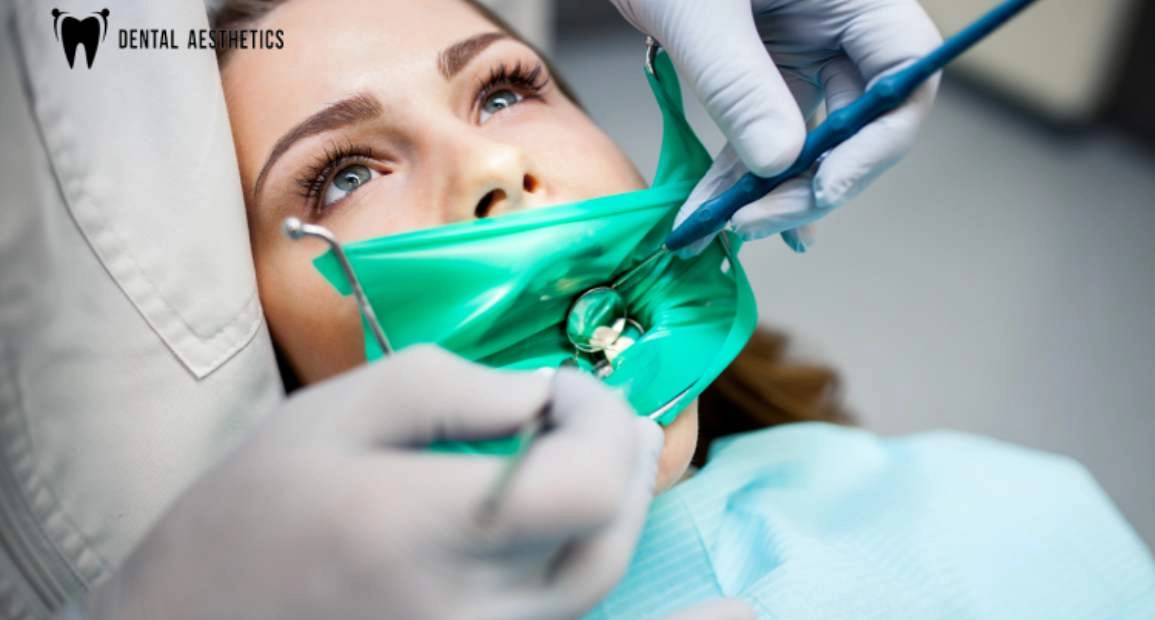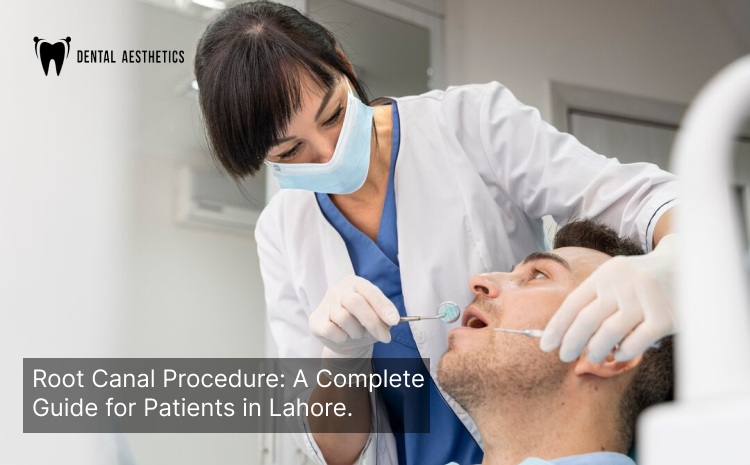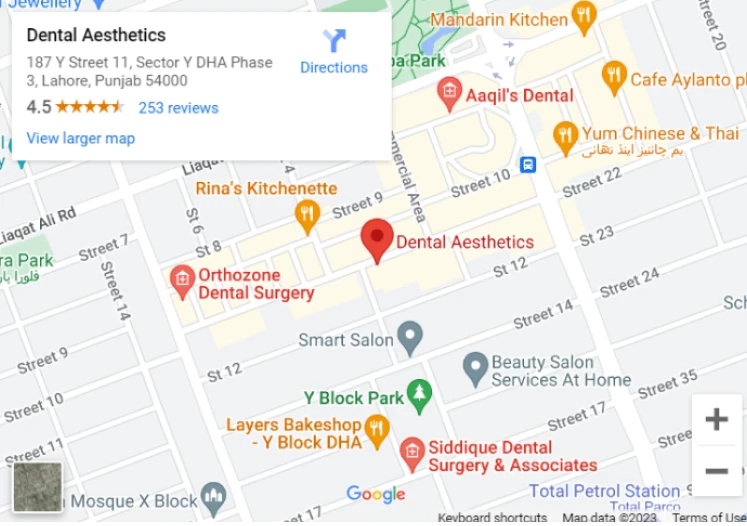What Is a Root Canal? A Complete Procedure & Recovery Guide for Lahore Patients

June 24, 2025
Feeling pain in your tooth consistently and still thinking,'What could be the reason?' An infected pulp inside it might cause it. But rest assured, it can be treated well with a root canal procedure (commonly known as endodontic therapy). It is specially designed to treat the damaged pulp, a soft tissue inside the root canal consisting of roots and nerves.
You might be wondering about the cost and recovery guide, right?. Guess what! You are not the only one. A recent study conducted at the Margalla Institute of Health Sciences, Rawalpindi, Pakistan, showed that out of 1185 patients, 250 (21.09%) said no to the root canal treatment just because of financial constraints.
If you're in Lahore and experiencing persistent tooth pain, a root canal may be your best option to save your natural tooth. Get Free Dental Advice Today!
What Is a Root Canal?
Root canal therapy is a specific procedure used to treat the damaged and infected pulp inside the root canal. This treatment aims to preserve the natural tooth and its structure instead of extracting it completely. Using advanced dental equipment, dentists remove bacteria and clean the infected area, followed by sealing and filling to restore its natural structure.
Normally, a tooth has a single round-shaped root canal, but in some cases, there are C-shaped root canals, which are often found at the back of teeth (lower molars), in which roots are connected in a “c” shape. Compared to a natural shape, a C-shaped root canal is complex and difficult to treat and clean. However, if done by a professional dentist or endodontist, it can be treated easily.

Why Do You Need A Root Canal?
So, here’s the big question. When and why do you even need a root canal? Here are some common symptoms and precursors that you shouldn’t ignore in the first place:
- Severe Tooth Pain:
If you are experiencing severe pain in your tooth, then it might be a symptom of damaged pulp. - Temperature sensitivity:
If you are facing hot and cold sensitivity in your tooth, it might indicate a damaged or infected nerve.
- Difficulty in chewing
Another sign of an inflamed and damaged pulp is difficulty in chewing food. If you are facing it, then you need a dental checkup. - Gum inflammation:
If your gums are inflamed, then it's a big sign that you need a proper checkup, and it might lead to a root canal procedure. - Dental Fracture:
If you have dental fractures, i.e., broken or chipped teeth, and they're still left unchecked, then you are making them vulnerable to tooth root canal. - Discoloured Enamel:
Discolouration of enamel into grey or brown signifies damaged pulp that can only be treated with tooth root canal. - Severe tooth decay:
If you have cavities and decay around your tooth, then you are risking bacterial invasion, which eventually causes dental pulp damage. - Pimples on the Gum
If you see pimples on your gums, commonly known as “gum abscess,” then it's a clear indication of pulp damage that requires an immediate checkup.
If the aforementioned symptoms are evident, then these would be the substantial reasons for you to get an endodontic treatment.
Step-by-Step Root Canal Procedure:
Here’s the step-by-step and simplified version of the root canal procedure:
X-Ray:
The first step involved in the root canal procedure is to take an X-ray of the tooth to determine the potential areas of inflammation and infection around the root. Dentists may use the pulp vitality test along with an X-ray to further enhance the detection process. It's the necessary step before starting the actual treatment.Using Anesthesia:
For a smooth and painless treatment, anesthesia is injected in the second step, which numbs the tooth and helps patients relax throughout the whole process.Placing a Dental Dam:
A dental dam is placed around the tooth to keep it clean and dry from saliva in the third step.Drilling a hole in a tooth:
The actual treatment begins in the fourth step when the dentist drills a hole in the crown (top surface) of a tooth. It is commonly done with the help of advanced dental equipment, such as a dental drill or laser technology.Removing and Cleaning Process:
Once the dentist drills the hole, he uses dental files to gently remove the damaged pulp from your tooth and scrubs the root canal sides afterwards. At the end, the treated area is rinsed with sodium hypochlorite solution or chlorhexidine to remove the debris and bacteria.The filling process:
Here comes the sixth step, which involves filling of the cleaned area. A rubber-like biocompatible substance commonly known as “gutta-percha” is used to fill this area. To make the filling more concrete, dentists usually put adhesive cement on it and seal it for better protection. At the end, a temporary filling is applied to the crown hole drilled for the dental root canal.The Next Appointment and Restoration:
So here’s the final and last step of the root canal therapy. To protect the treated tooth and restore its strength, a crown is usually placed on it, typically in the next appointment.
Recovery Guide for Lahore Patients:
Let's discuss some safety precautions and recovery guides after root canal process:
Right after the procedure:
You will experience mild pain after a root canal and inflammation around the treated area of your tooth. But it will last only a few hours or a couple of days if you take the pain reliever prescribed by your dentist.Avoid these at any cost:
If you want to recover from the root canal therapy quickly, you have to avoid chewing on the treated area and eat soft food. Stay away from sticky and hot/cold items, and talk only when necessary. By following these, you will get a quick recovery.

Maintaining Oral Hygiene:
Maintaining good oral health after a root canal process is essential for immediate recovery. It involves brushing teeth twice a day, using an antibacterial mouthwash, and a gentle round of floss around the treated area to keep it away from potential infection.Visit the dentist if you experience one of these:
If you are feeling severe pain even after taking a pain reliever and experiencing signs of inflammation or a broken filling around the treated area, then you should immediately go and check with your dentist.
Best Clinic for Root Canal Process in Lahore:
If you are concerned about root canal treatment prices in Pakistan and are looking for a reputable clinic, consider Dental Aesthetics in Lahore as the first option. Here, experienced dentists like Dr. Shahzad Mirza, along with his professional and well-equipped team, ensure that the procedure goes smoothly and painlessly at an affordable cost. With hundreds of successful endodontic therapies and numerous satisfied clients from all over Pakistan, we are proud to stand as one of the best and most affordable clinics for root canal sessions.
Conclusion:
If you are dealing with these symptoms, then you need to consult Dental Aesthetics and get your canal therapy done as soon as possible. The procedure might look intimidating at first, but it's quite normal and painless, as we have simplified it step by step. And by following our recovery guidance, you can easily heal from the root canal process. So if you are a patient living in Lahore, just call us now to book your appointment!
FAQ’s
1. Is a root canal a treatment or surgery?
No, it's a treatment, although it looks like a surgery, but it's considered to be a non-surgical treatment.
2. How long does root canal treatment remain effective?
According to professional dentists, a root canal therapy could last for more than 10 years. However, the time duration can be increased if you maintain it with proper care.
3. Is root canal treatment secure?
If performed by a professional endodontist, then it is generally safe and secure. You'd better look for the best and most professional clinic in your area before undergoing treatment.
4. Do I need a root canal?
If you are experiencing severe tooth decay, gum inflammation, or pimples on it, then you need a root canal treatment.
5. Does the root canal process hurt?
No, it doesn't. It's a smooth process that uses anesthesia to numb and relax your affected area during treatment. You should not be worried about the pain at all.


